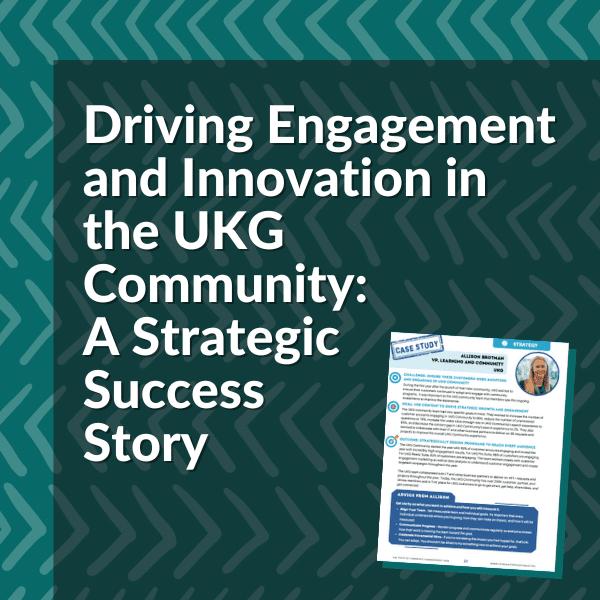Community programs are evolving rapidly (as always!), with organizations increasingly recognizing the importance of having an approved, operational, and measurable strategy (spoiler alert – an approved strategy is one of the criteria for our best-in-class community segment). This shift is evident in the significant growth of strategic maturity, with nearly half of respondents in 2024 confirming they have a defined community strategy—a leap from just 28% in 2020. This trend underscores the critical role of strategic planning in transforming communities from niche initiatives into full-fledged enterprise programs, complete with diverse use cases and dedicated budgets.
Community Programs Securing Budgets
The rise in community programs with dedicated budgets highlights their growing legitimacy within enterprise structures. In 2020, only 38% of survey respondents reported having a dedicated budget for their community programs. Fast forward to 2024 – dedicated budgets surged to 61%. This steady increase signals a bright future for community programs as essential business units.
However, despite this progress, overall community budget growth has slowed compared to 2023. More programs report budget decreases than increases, reflecting broader economic challenges such as rising interest rates and political uncertainty. These financial headwinds are prompting organizations to scrutinize budgets and headcounts across the board. Still, communities remain valuable assets, delivering compelling returns on investment, and optimism for budget recovery in 2025 is warranted.

Best-in-Class Programs Lead the Way
The best-in-class segment continues to shine. In 2024, 89% of best-in-class programs reported they control their budgets, up from 73% the previous year. Additionally, executive perceptions of communities remain overwhelmingly positive, especially within this segment, where 92% report executives view their programs positively or very positively. While there has been a slight decline in “positive” perceptions since 2022, this shift largely reflects neutral rather than negative sentiment.

The Role of Roadmaps in Strategic Growth
Formal, approved roadmaps are an essential tool for community development, with only 8% of respondents in 2024 indicating they lack a community roadmap—a dramatic improvement from 32% just five years ago. Roadmaps are instrumental in guiding communities toward best-in-class performance, ensuring alignment with organizational goals, and securing necessary resources.




